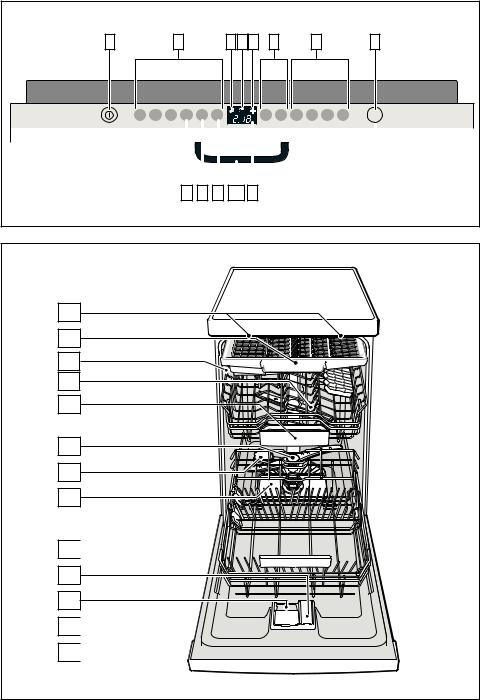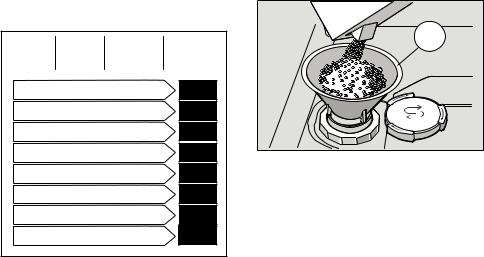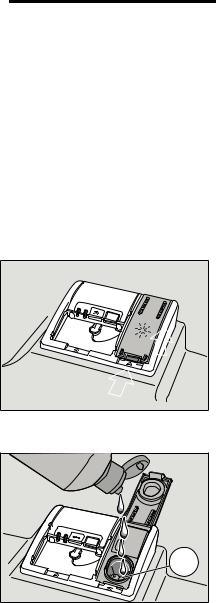V-zug 45S User Manual


S |
V |
Z Y U |
W |
X |
T |
|
|
|
|
|
|
|
|
|
|
|
|
|
|
|
|
|
|
|
|
|
|
|
|
|
|
|
|
|
|
|
|
|
|
|
|
|
|
|
|
|
|
|
|
|
|
|
|
|
|
|
|
|
|
|
|
|
|
|
|
|
|
|
|
|
|
|
|
|
|
|
|
|
|
|
|
|
] |
|
) |
|
^ |
|
S_ |
|
` |
|
[ Z \ |
|
||||||
V_
VS
VV
VZ
VY
VU |
VW |
VX |
VT 

V`
Z_
ZS 

ZV 

Table of contents |
|
8Intended use . . . . . . . . . . . . . . . |
4 |
(Safety instructions . . . . . . . . . . |
4 |
Before you switch ON the appliance . 4 Delivery . . . . . . . . . . . . . . . . . . . . . . . . 5 Installation. . . . . . . . . . . . . . . . . . . . . . 5 In daily use . . . . . . . . . . . . . . . . . . . . . 6 Door lock . . . . . . . . . . . . . . . . . . . . . . 6 Damage . . . . . . . . . . . . . . . . . . . . . . . 6 Disposal . . . . . . . . . . . . . . . . . . . . . . . 6
7Protection of the environment . 8
Packaging. . . . . . . . . . . . . . . . . . . . . . 8 Old appliances . . . . . . . . . . . . . . . . . . 8
*Getting to know your
appliance . . . . . . . . . . . . . . . . . . 8
Control panel . . . . . . . . . . . . . . . . . . . 8 Appliance interior . . . . . . . . . . . . . . . . 8 Overview of menu . . . . . . . . . . . . . . . . 9
+Water softening system/
Special salt . . . . . . . . . . . . . . . . 9
Setting . . . . . . . . . . . . . . . . . . . . . . . . 9 Water hardness table . . . . . . . . . . . . 10 Using special salt . . . . . . . . . . . . . . . 10 Detergents with salt component . . . . 10 Switching off water softening system 10
,Rinse aid . . . . . . . . . . . . . . . . . |
11 |
Setting amount of rinse aid . . . . . . . . 11
Switching off rinse aid refill
indicator . . . . . . . . . . . . . . . . . . . . . . 12
-Utensils . . . . . . . . . . . . . . . . . . |
12 |
Not suitable . . . . . . . . . . . . . . . . . . . 12 Glass and utensil damage . . . . . . . . 12 Loading the dishwasher . . . . . . . . . . 12 Unloading the dishwasher . . . . . . . . 12
en
Cups and glasses . . . . . . . . . . . . . . . 13 Pans . . . . . . . . . . . . . . . . . . . . . . . . . 13 Cutlery drawer . . . . . . . . . . . . . . . . . 13 Folding spikes . . . . . . . . . . . . . . . . . 13 Small accessories holder . . . . . . . . . 14 Adjusting the height of the basket . . 14
.Detergent . . . . . . . . . . . . . . . . . 15
Adding detergent . . . . . . . . . . . . . . . 15 Combination detergent . . . . . . . . . . . 16
/Overview of programmes . . . . 17
Programme selection . . . . . . . . . . . . 17 Information for test institutes . . . . . . . 18
0Additional options . . . . . . . . . . 18
Express Wash/ Speed Perfect (VarioSpeed). . . . . . . . . . . . . . . . . . . 18
Half load . . . . . . . . . . . . . . . . . . . . . . 18 Hygiene. . . . . . . . . . . . . . . . . . . . . . . 18 Intensive zone . . . . . . . . . . . . . . . . . . 18 Extra drying. . . . . . . . . . . . . . . . . . . . 18
1Operating the appliance . . . . . 19
Programme data . . . . . . . . . . . . . . . . 19 Aqua sensor . . . . . . . . . . . . . . . . . . . 19 Switching on the appliance . . . . . . . . 19
Optical display while the programme
is running . . . . . . . . . . . . . . . . . . . . . 20 Remaining running time display . . . . 20 Timer programming . . . . . . . . . . . . . 20 End of programme . . . . . . . . . . . . . . 21 Automatic switch off / interior light . . 21 Switching off the appliance . . . . . . . . 22 Interrupting the programme . . . . . . . 22 Terminating the programme . . . . . . . 22 Changing the programme. . . . . . . . . 22 Intensive drying. . . . . . . . . . . . . . . . . 23
3

en Intended use
2Cleaning and maintenance . . . 23
Overall condition of the machine . . . 23 Special salt and rinse aid . . . . . . . . . 24 Filters . . . . . . . . . . . . . . . . . . . . . . . . 24 Spray arms . . . . . . . . . . . . . . . . . . . . 24
3Fault, what to do? . . . . . . . . . . |
25 |
Waste water pump . . . . . . . . . . . . . . |
26 |
Fault table . . . . . . . . . . . . . . . . . . . . . |
27 |
4Customer service . . . . . . . . . . |
35 |
5Installation and connection . . |
35 |
Product package . . . . . . . . . . . . . . . 35 Safety instructions. . . . . . . . . . . . . . . 35 Delivery . . . . . . . . . . . . . . . . . . . . . . . 36 Technical specifications . . . . . . . . . . 36 Installation. . . . . . . . . . . . . . . . . . . . . 36 Waste-water connection . . . . . . . . . . 36 Fresh water connection . . . . . . . . . . 36 Warm water connection . . . . . . . . . . 37 Electrical connection. . . . . . . . . . . . . 37 Removing the appliance . . . . . . . . . . 38 Transportation. . . . . . . . . . . . . . . . . . 38
Protection against frost
(Emptying the appliance) . . . . . . . . . 38
8Intended use
esudentnI
This appliance is intended for use in the home and
the home environment.
Use the dishwasher only in the household
and only for its designed purpose: for washing domestic dishes.
(Safety instructions
snoitcurtsniyteSaf
Children from 8 years of age or people whose physical, sensory or mental abilities or their lack of experience or knowledge prevent them
from using the appliance safely must not use this appliance without supervision
or instruction by a responsible person.
Before you switch ON the appliance
Please read the operating and installation instructions carefully. They contain
important information on how to install, use and maintain
the appliance.
Retain all documents for subsequent use or for the next owner.
4
Delivery
1.Check the packaging and dishwasher immediately for damage caused in transit. Do not switch on a damaged appliance, but contact your supplier.
2.Please dispose of the packaging material in an environmentally friendly manner.
3.Do not let children play with packaging and its parts. There is a risk of suffocation from collapsible boxes and film.
Installation
Following installation, ensure that the back
of the dishwasher is not freely accessible (protection against contact due to hot surface).
Install and connect
the appliance according to the installation
and assembly instructions.
Prior to installation, disconnect the dishwasher from the power supply.
Ensure that the protective conductor system
of the domestic supply has been correctly installed.
Safety instructions |
en |
The electrical connection conditions must correspond with the specifications
on the dishwasher rating plate 92.
If the power cord of this appliance is damaged, it must be replaced with a particular power cord.
To prevent injury, the power cord may be replaced
by customer service only.
If the dishwasher is installed in a high-sided unit, the unit must be secured properly.
If you install a microwave oven above the dishwasher, the microwave oven may be damaged.
Install built-under
or integratable appliances only under continuous worktops which have been screwed to adjacent cupboards to ensure stability.
Do not install the appliance near heat sources (radiators, heat storage tanks, cookers or other appliances which generate heat) and do not install under a hob.
After installing the appliance, ensure that the plug is easily accessible.
(See Electrical connection)
5
en Safety instructions
Some models:
The plastic housing on the water connection contains an electric valve,
the connecting cables are in the supply hose.
Do not cut through this hose, do not immerse the plastic housing in water.
In daily use
Read and observe the safety information and instructions for use on the packaging
for cleaning and rinsing agents.
Childproof lock (door lock)Dlockro *
The description of the childproof lock is at the back in the envelope.
* depending on model
Damage
The appliance may be repaired and opened up by a technician only. To do this, disconnect the appliance from the power supply. Pull out the mains plug or switch off the fuse. Turn off the tap.
If the fascia is damaged (cracks, holes, broken buttons), do not operate the appliance. Pull out the mains plug or switch off the fuse. Turn off the tap, call customer service.
Disposal
1.Make redundant appliances unusable to prevent subsequent accidents.
2.Dispose of the appliance in a n environmentally friendly manner.
Ã=Warning Risk of injury!
To prevent injuries, e.g. caused by stumbling, open the dishwasher only briefly in order to load and unload the dishwasher.
Knives and other utensils with sharp points must
be placed horizontally in the cutlery drawer.
Do not lean or sit on the open door.
In the case of free-standing appliances, ensure that the baskets are not overloaded.
If the appliance
is not in a cavity and a side panel is accessible, the door hinge area must be covered at the side
for reasons of safety
(risk of injury). The covers are available as optional accessories from customer service or specialist outlets.
6
Ã=Warning
Risk of explosion!
Do not add any solvents to the washing chamber. Danger of explosion!
Ã=Warning Risk of scalding!
Open the door carefully when the programme is still running. There is a risk of hot water spraying out of the appliance.
Ã=Warning Risks to children!
If fitted, use the childproof lock. An exact description can be
found in the back of the enve lope.
Do not allow children to play with or operate
the appliance.
Keep children away from detergents and rinse aid. These may cause chemical burns in the mouth, throat and eyes or asphyxiation.
Keep children away from open dishwasher.
The water in the rinsing compartment is not drinking water and could contain detergent residue.
Ensure that children do not
place fingers in the tablet collecting tray 1B. Small fingers could become caught in the slots.
Safety instructions |
en |
When opening and closing the door on an eye-level appliance, ensure that children do not become jammed or crushed between the appliance door and the cupboard door below.
Children could become locked in the appliance (danger of suffocation) or get into another dangerous situation.
Redundant appliances: Pull out the mains plug, sever and dispose of the power cord. Destroy the door lock so that the door can no longer be closed.
7

en Protection of the environment
7Protection of the
environment
onmentrvieeht ofnoitcetoPr
Both the packaging of new appliances and the old appliances themselves contain valuable raw materials
and recyclable materials.
Please dispose of the individual parts separated according to type.
Please ask your dealer or inquire at your local authority about current means
of disposal.
Packaging
All plastic parts of the appliance are identified with internationally standardised abbreviations (e.g. >PS< polystyrene). Therefore, plastic waste can be sorted out when the appliance is being disposed of.
Please follow the safety instructions under “Delivery”.
Old appliances
Please follow the safety instructions under “Disposal of your appliance”.
according to the European guideline 2002/96/EC on waste electrical and electronic equipment – WEEE. The guideline specifies the framework for an EU-wide valid
return and re-use of old appliances.This appliance is identified
*Getting to know your appliance
ecnailpayourknwotgnitGet
Diagrams of the control panel
and the interior of the appliance can be found in the envelope at the front.
Individual positions are referred to in the text.
Control panel
( ON/OFF switch
0 Programme buttons **
8 Display “Check water supply” @ Salt refill indicator
H Rinse aid refill indicator P Timer programming * X Additional options ** ` START button
h Digital display
)" Door opener
* depending on model
** Number depending on model
Appliance interior
1" Interior light * 1* Cutlery drawer 12 Top basket
1: Upper spray arms 1B Tablet collecting tray 1J Bottom spray arm
1R Dispenser for special salt
1Z Filters
1b Bottom basket
1j Dispenser for rinse aid 9" Detergent dispenser
9* Lock for detergent dispenser
92 Rating plate
* depending on model
8

Water softening system/Special salt |
en |
Overview of menu |
Setting |
The settings can be found in the individual chapters.
• Water Hardness •:‹‹ - •:‹ˆ š Intensive drying š:‹‹ - š:‹‚ § Rinse aid §:‹‹ - §:‹‡
‘ Hot water ‘:‹‹ - ‘:‹‚
›End of programme buzzing sound
›:‹‹ - ›:‹„
˜ Automatic disconnection ˜:‹‹ - ˜:‹ƒ
‚Optical display while the programme is running ‚:‹‹ -‚:‹‚
+Water softening system/Special salt
tlaslaiceSpm/tsygnnietofsWater
To ensure good washing results,
the dishwasher requires soft water, i.e. containing low amounts of lime, otherwise white limescale will be deposited on the utensils and inner container.
Tap water above 1.2 mmol/l must be softened. The water is softened with special salt (regeneration
salt) in the water softening system of the dishwasher.
The setting and therefore the required amount of salt
depends on the degree of hardness of your tap water (see table).
The amount of salt dispensed can be set from •:‹‹ to •:‹ˆ.
Salt is not required at the set value
•:‹‹.
1.Find out about the hardness value of your tap water. Your water utility company will help you with this.
2.Set value can be found in the water hardness table.
3.Open the door.
4.Switch on ON/OFF switch (.
5.Hold down programme button # and press START button ` until
•:‹.... is indicated on the digital display.
6.Release both buttons.
The LED for button # flashes and the digital display h displays the factory setting •:‹….
To change the setting:
1.Press programme button 3.
Each time the button is pressed, the
set value increases by one level; when the value of •:‹ˆ has been
reached, the display jumps back to •:‹‹ (off).
2.Press START button `.
The chosen setting has now been stored.
3.Close the door.
9

en Water softening system/Special salt
Water hardness table
|
% |
|
# |
|
& |
|
|
|
|
|
$ |
|
|
|
|
|
|
! |
|
|
|
! !" |
|
|
|
! ! |
|
|
|
! ! |
|
|
|
! ! |
|
|
|
! ! |
|
|
|
! !" |
|
|
|
! ! |
|
|
|
Using special salt
Always refill with special salt immediately before switching on the appliance. This ensures that overrun special salt solution is immediately washed out and does not corrode the rinsing tank.
1.Open the screw-type cap of the compartment 1R.
2.Fill the tank with water (only required when switching on the appliance for the first time).
3.Then add dishwasher salt (not table salt or tablets).
The water is displaced and runs out.
As soon as the salt refill indicator @ on the fascia is lit, top up the salt.
|
* depending on model
Using detergents with salt
componentetDergnewithsaltcomponentst
If combined detergents with a salt component are used, salt can usually be omitted up to a water hardness of
21° dH (37° fH, 26° Clarke, 3.7 mmol/ l). If the water hardness is over 21° dH, special salt must be used.
Switching off salt refill indicator/water softening
systemSwitchingfwatero fteningsystemos
If the salt refill indicator @ is impaired (e.g. when using combined detergents containing salt component), it can be switched off.
Proceed as described under
“Adjusting the water softening system” and set the value to •:‹‹.
The water softening system and salt refill indicator are now switched off.
à Caution
Never fill the salt dispenser with detergent. You will destroy the water softening system.
10

,Rinse aid
diaesnRi
As soon as the rinse-aid refill indicator H is lit on the fascia, there
is still a rinse-aid reserve of 1-2 rinsing processes. Refill with rinse aid.
The rinse aid is required for stain-free utensils and clear glasses. Use only rinse aid for domestic dishwashers.
Combined detergents with rinse-aid component may be used up to a water hardness of 21° dH (37° fH,
26° Clarke, 3.7 mmol/l) only. If
the water hardness is over 21° dH, rinse aid must be used.
1.Open the dispenser 1j by pressing and lifting the plate on the cover.
|
|
2.Carefully pour rinse aid up
to the max. mark in the filler opening.
|
Rinse aid |
en |
3.Close cover until it clicks shut.
4.To prevent excessive foam formation during the next rinse cycle, remove any rinse aid which has run over with a cloth.
Setting amount of rinse aid
The amount of rinse aid can be set from §:‹‹ to §:‹‡. Please set rinse aid on §:‹… to obtain very good drying results (§:‹… is already set in factory).
Do not change the amount of rinse aid unless streaks (select lower setting) or water stains (select higher setting) are left on the utensils.
1.Open the door.
2.Switch on ON/OFF switch (.
3.Hold down programme button # and press START button `
until •:‹... is indicated on the digital display.
4.Release both buttons.
The LED for button # flashes and the digital display h displays the factory setting •:‹….
5.Press programme button # until the factory set value §:‹…
is indicated on the digital display h.
To change the setting:
1.Press programme button 3.
Each time the button is pressed,
the set value increases by one level; when the value of §:‹‡ has been
reached, the display jumps back to §:‹‹ (off).
2.Press START button `. The set value is saved.
3.Close the door.
11

en Utensils
Switching off rinse aid refill indicator
If the rinse-aid refill indicator H is impaired (e.g. when using combined detergents containing rinse aid component), it can be switched off.
Proceed as described under “Setting
amount of rinse aid” and set the value to §:‹‹.
The rinse aid refill indicator H is now switched off.
-Utensils
slisneUt
Not suitable
Cutlery and utensils made of wood.
Delicate decorative glasses, craft and antique utensils. These decors are not dishwasher-proof.
Plastic parts not resistant to heat.
Copper and tin utensils.
Utensils which are soiled with ash, wax, lubricating grease or ink.
Aluminium and silver parts have a tendency to discolour and fade during the wash cycle. Even some types of glass (e.g. crystal glass objects) may turn cloudy after many wash cycles.
Glass and utensil damage
Causes:
Glass type and glass production process.
Chemical composition of the detergent.
Water temperature of the wash programme.
Recommendation:
Use only glasses and porcelain which the manufacturer designates as dishwasher-proof.
Use a detergent which protects utensils.
Take glass and cutlery out of the dishwasher as soon as possible after the programme ends.
Loading the dishwasher
1.Remove large food remnants. It
is not necessary to prerinse utensils under running water.
2.Place the utensils so that
–they are secure and cannot tip over.
–all utensils with their openings face down.
–parts with curves or indentations are at an angle, thereby allowing water to drain.
–they do not obstruct rotation
of the spray arms 1: and 1J.
Very small utensils should not be washed in the machine, as they may fall out of the baskets.
Unloading the dishwasher
To prevent water from dripping off the upper basket onto the utensils in the lower basket, it is recommended
to empty the appliance from the bottom up.
Hot utensils are sensitive to shock! Therefore, when the programme ends, leave the utensils to cool down in the dishwasher until they can be handled.
Note
When the programme ends, water droplets can still be seen inside the appliance. This does not affect the drying of the utensils.
12
